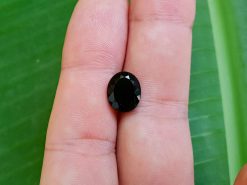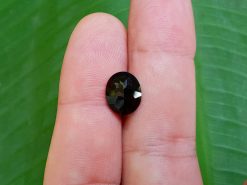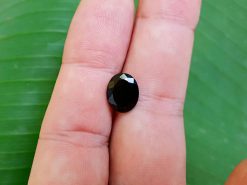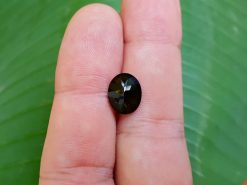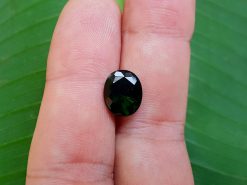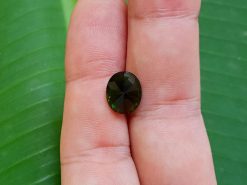Diopside
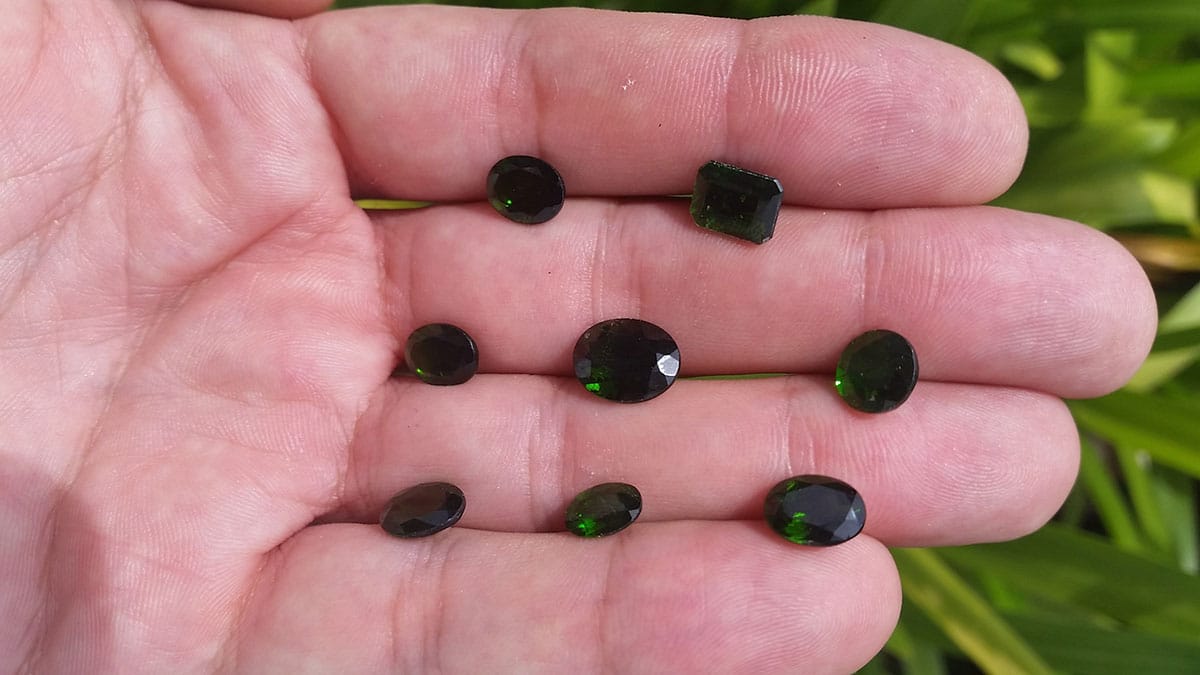
Chrome diopside meaning and healing properties benefits
Buy natural diopside in our shop
A monoclinic pyroxene mineral with composition MgCaSi2O6. It forms complete solid solution series with hedenbergite (FeCaSi2O6) and augite, and partial solid solutions with orthopyroxene and pigeonite. It forms variably colored, but typically dull green crystals in the monoclinic prismatic class. It has a Mohs hardness of six and a specific gravity of 3.25 to 3.55.
The crystal is found in ultramafic kimberlite and peridotite igneous rocks, and it rich augite is common in mafic rocks, such as olivine basalt and andesite. Also found in a variety of metamorphic rocks, such as in contact metamorphosed skarns developed from high silica dolomites. It is an important mineral in the Earth’s mantle and is common in peridotite xenoliths erupted in kimberlite and alkali basalt
Chrome diopside
Chrome diopside ((Ca,Na,Mg,Fe,Cr)2(Si,Al)2O6) is a common constituent of peridotite xenoliths, and dispersed grains are found near kimberlite pipes, and as such are a prospecting indicator for diamonds.
Occurrences are reported in Canada, South Africa, Russia, Brazil, and a wide variety of other locations. In the US, localities are described in the serpentinite belt in northern California, in kimberlite in the Colorado Wyoming State Line district, in kimberlite in the Iron Mountain district, Wyoming, in lamprophyre at Cedar Mountain in Wyoming, and in numerous anthills and outcrops of the Tertiary Bishop Conglomerate in the Green River Basin of Wyoming.
Much from the Green River Basin localities and several of the State Line Kimberlites have been gem in character.
Gemstone quality is found in two forms: the black star and the chrome, which includes chromium, giving it a rich green color. At 5.5 – 6.5 on the Mohs scale, it is relatively soft to scratch. Due to the deep green color of the gem, they are sometimes referred to as Siberian emeralds, though they are on a mineralogical level completely unrelated, emerald being a precious stone and it being a semi precious stone.
Violane is a manganese rich variety, violet to light blue in color.
Russian diopside
Russian diopside is another name for chrome diopside. This beautiful gemstone is known for its rich green color, vitreous luster and high clarity, which is rarely found in other green gems.
Black star of India
The Indian black star diopside is a cabochon cut gemstone featuring a blazing white four pointed star radiating against an inky black sky. This stpne is frequently called “the black star of India” by gem dealers. But this name is very confusing because “The star of India” is the official name of a famous Sapphire wich is now in the Hall of Gems at the American Museum of Natural History in New York, USA.
Diopside meaning and healing properties benefits
The following section is pseudo scientific and based on cultural beliefs.
A high vibration stone that awakens the heart energies that help you receive the power of love. This beautiful and intensely healing stone encourages the growth of your heart chakra and enhances the power of love, trust, humility, and commitment.
FAQ
What mineral is diopside?
The stone is a member of pyroxene group mineral with formula is MgCaSi2O6. Specimens can be colorless but are more often bottle green, brownish green, or light green in color. It has two distinct prismatic cleavages at 87 and 93° typical of the pyroxene series.
What is diopside worth?
The price of jewelry can vary depending on the quality and the weight of the stone. High quality crystals with the best color costs around $200 per carat.
Where is diopside found?
The stone is mined almost exclusively in a region of Eastern Siberia known as Inagli, an area better known for its impressive diamond deposits. In recent years, deposits have also been found in Pakistan.
Is Russian diopside valuable?
The value of this attractive dark green gemstone stone depends mostly on the color saturation. Gemstones with vivid and brilliant green color are considered the most valuable and command a higher price in today’s market.
How is diopside formed?
The gemstone forms during contact metamorphism of limestones and dolomites. Most of crystals used to cut faceted gems and the granular stone used as ornamental stone occurs in these carbonate deposits. It is much more abundant in Earth’s mantle than at the surface.
Is chrome diopside a precious stone?
It is a semi precious stone. There are only four precious stones : Diamond, ruby, sapphire and emerald.
Natural diopside for sale in our gem shop
We make custom made diopside jewelry as engagement rings, necklaces, stud earrings, bracelets, pendants… Please contact us for a quote.

